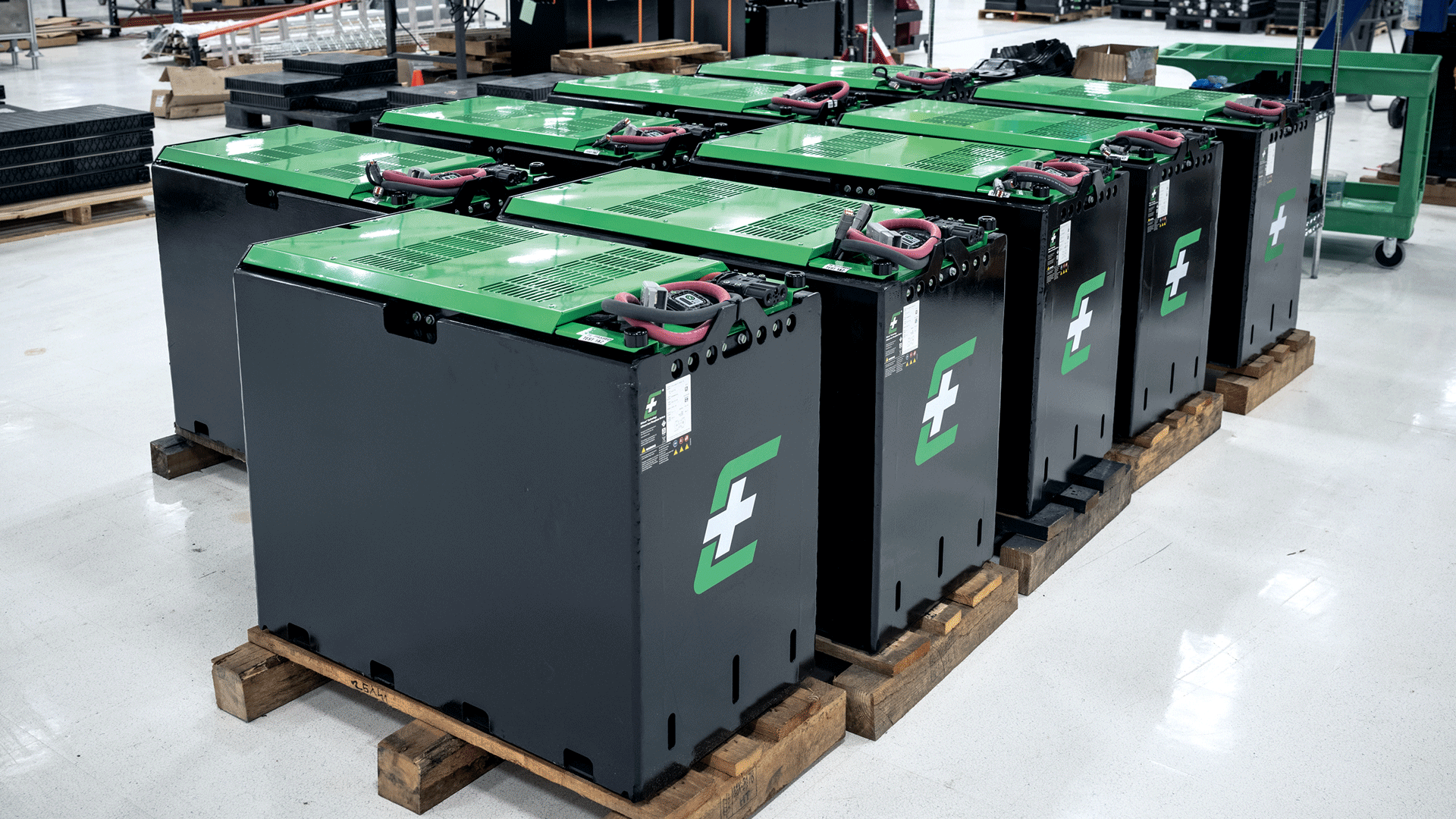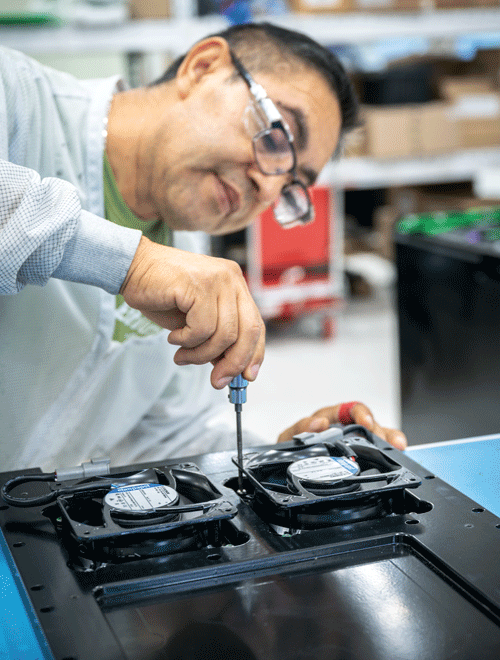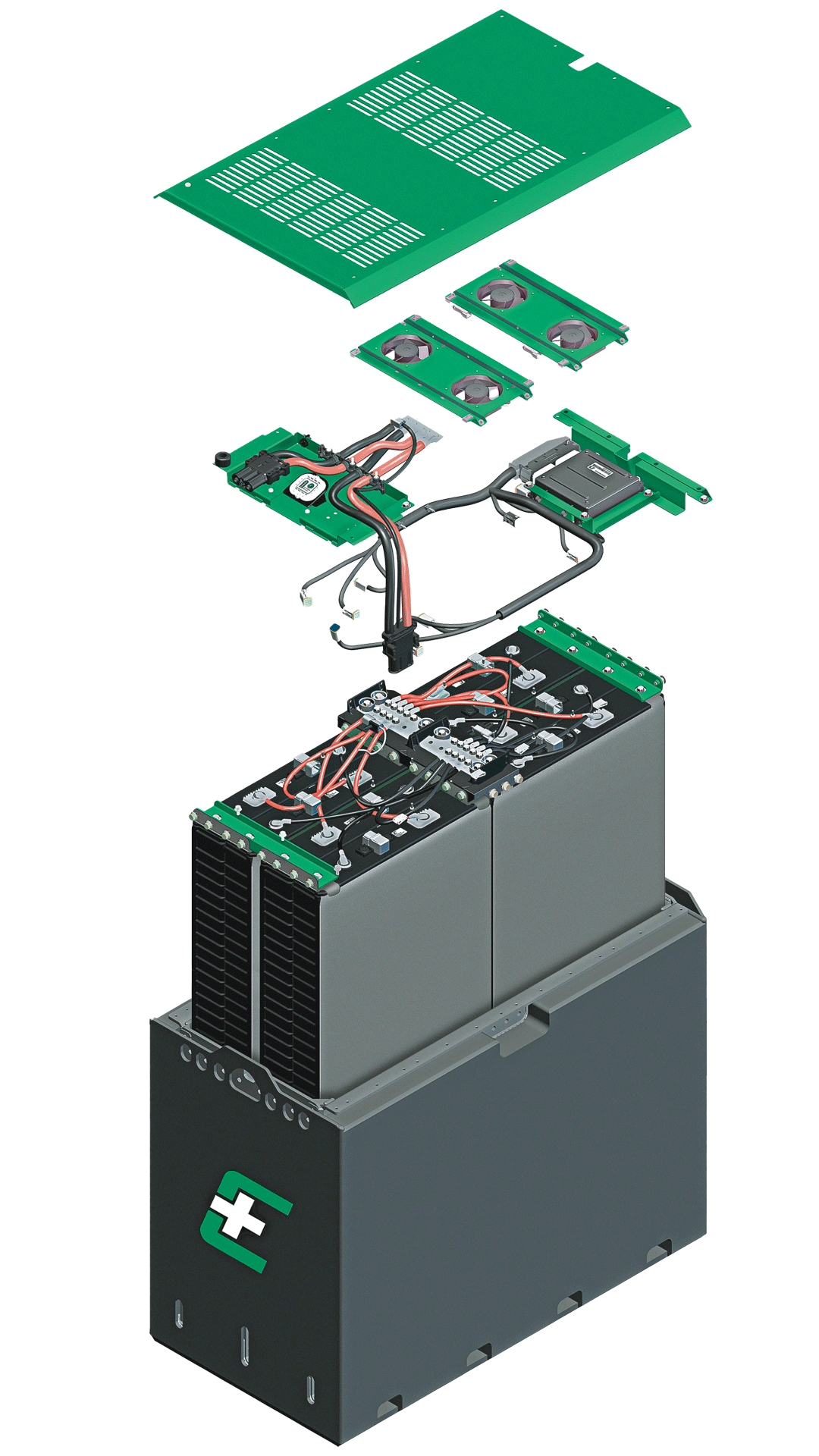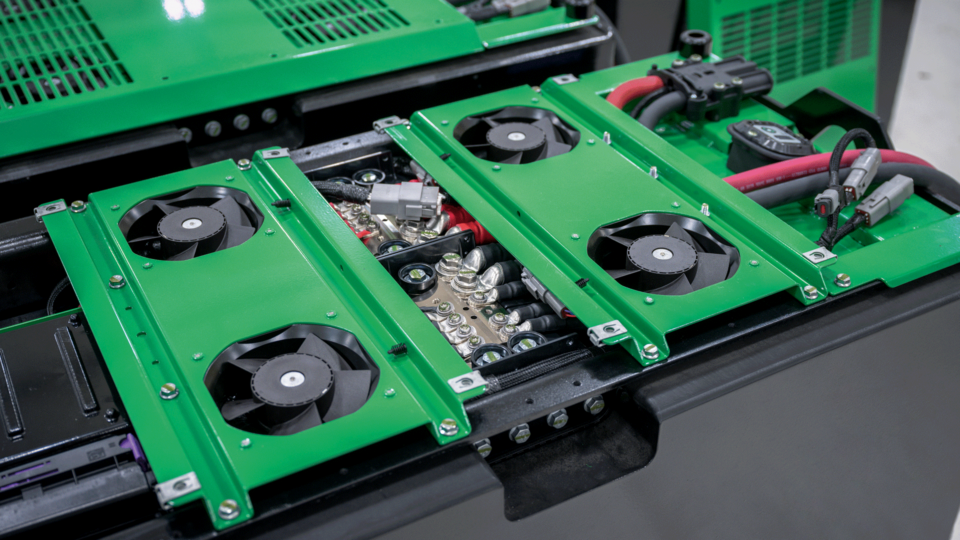Logistics closes the gap between production and consumption. Everything we buy in stores, order online or have shipped to our homes was manufactured, packaged and loaded elsewhere. And it’s highly likely that at some point, a forklift truck did the work, in a logistics center somewhere in the world. Forklift trucks are the busy bees in warehouse and logistics. They often work 24 hours a day, up to 365 days a year. The good news is that the majority of these millions of machines are now electric. The “bad news” is that the power usually comes from a lead-acid battery.
Firstly, this is less environmentally friendly – the heavy metal lead is a hazard to health and the environment even in low doses – and secondly, it’s strenuous for the forklift drivers on shifts. Working three shifts a day, the team has to replace the lead acid battery three times. After the eight-hour shift is over, the procedure is always as follows: Hook up the empty battery on the charging cable, measure the water level and add water if necessary, put the replacement battery in the forklift and move on to the next shift.

(Photo | Scott Van Osdol)
A forklift truck therefore needs at least 2 to 3 lead acid batteries per working day, which have to be alternately charged, re-installed and properly cared for to fulfill their service life. This costs logistics specialists time and money to deploy and maintain them.
Electrified – but how?
Ethium is an incubated start-up within EControls, a US leader and global provider of engine control solutions and fuel systems for forklift trucks. They know the market, understand how forklift trucks are used as well as how complex and expensive operation with lead-acid batteries is. Jinger McPeak, Vice President of Ethium, says, “The forklift truck market is much further ahead with electrification than, for example, the automotive sector. At Ethium, it was clear to us that the next step now had to be a more sustainable drive solution – so, we developed the most advanced battery on the market. We wanted to develop this solution using inspiration from our long time OEM customers who were part of this transformation.” Ethium began to develop a lithium-ion battery for the forklift truck market in 2016.

“The forklift truck market is electrified to a large extent. Now, together with the OEM, we are taking the next step towards a more sustainable drive solution.”
Jinger McPeak, Vice President Ethium by EControls
The parent company’s many years of experience and data records from all of the calibrations, engine control systems and fuel systems for forklift trucks were advantageous for the company. Nevertheless, the developers started from scratch. “Every project at Ethium starts with a level 1 meeting. We put all our smart minds from the different disciplines into a room, throw the idea on the wall and ask, ‘what do you think?’ And then it is discussed and pondered. With 200 engineers at the company, many of them with PhDs, this can be a lively discussion,” explains Jinger McPeak with a laugh. “But we believe in vigorous debate and this is how the best solutions come about.”
5 sustainable technological advantages for the lithium-ion battery
For a total of five years, the engineers worked on the lithium-ion battery, and developed five sustainable technological advantages that ensure its safety and durability. Jinger McPeak calls it “an engineering marvel”: The battery box is more compact than a standard lead-acid battery, with double the charging capacity. In just one hour, it is fully charged, water and normal maintenance are not required, and it still has up to four times the service life. The environmental aspect was also important in the development phase, “the core of our solution is lithium iron phosphate (LFP). It is non-flammable, non-explosive, has a maximum service life and maximum discharge depth. It has neither cobalt nor nickel, meaning fewer raw materials.” One of the five sustainable advantages is called “active balancing.” The “energy level” of the cells is constantly monitored and, if necessary, energy is fed from a full cell to one with a lower charge so that all cells are always charged and discharged evenly.
This makes the battery much more efficient and prolongs its service life. For protection, Ethium relies on “active safety” and “passive safety” technology. Active safety involves monitoring the data that is constantly supplied by the battery management system and provides information about the current condition. Passive means that all cells are connected using bonded wire: if a cell leaves its “comfort zone,” it is automatically switched off as with a fuse. Every module within the battery has its own Battery Management electronics providing the most intelligent and responsive of any battery on the market.
Temperature is an essential element in batteries. The technologies for this are “active heating” and “active cooling,” explains Jinger McPeak, “The durability of lithium-ion batteries relies heavily on them always having pleasant ‘T-shirt temperatures’. This is why our batteries are actively cooled and actively heated.” Sensors measure the temperature of many of the hundreds of cells per battery module – around 3,000 cells in total per battery box. If it is too hot or too cold, the battery management system sets the air conditioner or heating accordingly.


A compact fan for cooling
The IP68-protected compact fan 4118/2H4PU from ebm-papst is responsible for active cooling. It extracts outside air through ducts in the battery housing, dissipates it through the metal side of the modules and cools the cells in a targeted manner. The compact fan is UL-certified, an OEM safety regulation that is required for use on the American market. Joe Giacona, Director Transportation and Mobile at ebm-papst in Farmington, USA, says, “Ethium approached us for a robust solution for active cooling of their battery. Our team worked closely with their engineers and our colleagues in Germany to find the optimal compact fan that exactly met the performance requirements.”
Jinger McPeak emphasizes: “The fact that our engineers chose the compact fan based on its performance values and robustness, and decided against developing their own solution, definitely speaks for the product and is a compliment!” Now, if a customer would like to switch from the lead-acid to the lithium-ion battery, they can simply replace the old battery with a new battery from Ethium and off they go. Thanks to the standardized connections and the identical size, this transition is swift and simple. But Jinger McPeak sees the wealth of data as one of the biggest advantages for customers.
This is how Ethium’s innovative battery solution works

“Someone managing a forklift fleet needs reliable data around the clock: The battery provides a range of information, including on the battery charge status, service life and behavior during an average shift, via a web interface. No one has to guess or rely on their gut feeling. In the best case scenario, our customers even uncover additional logistics capacities and can use forklift trucks more efficiently without having to purchase new equipment.”
Over the course of one shift, the drivers charge the lithium-ion batteries during their short work breaks. All in all, charging takes no longer than sixty minutes per shift. No need to measure the water level, add water, or perform maintenance. Several thousand charging cycles in 18 months without loss of capacity. “We are ready for the transformation,” says Jinger McPeak.
Learn more about compact fans:
Compact fans: axial, radial, diagonal
For high air performance and pressures with low consumption.



Leave a comment